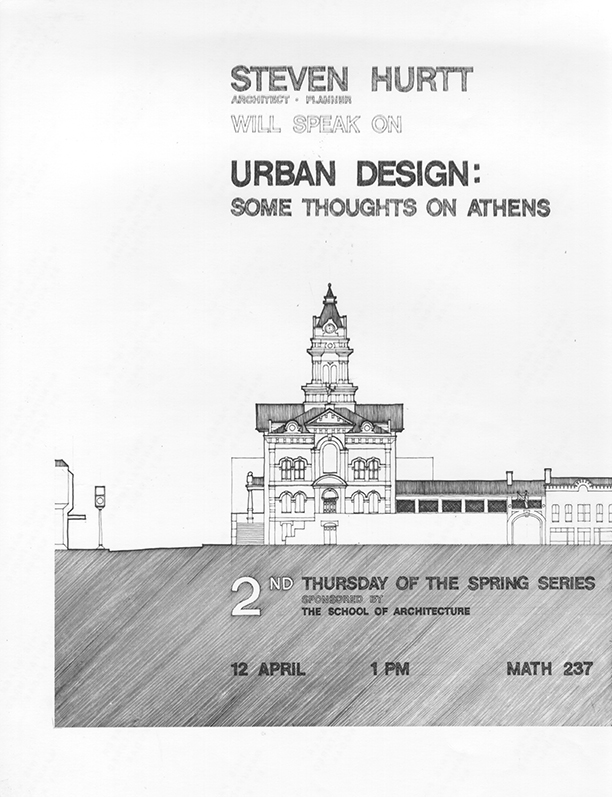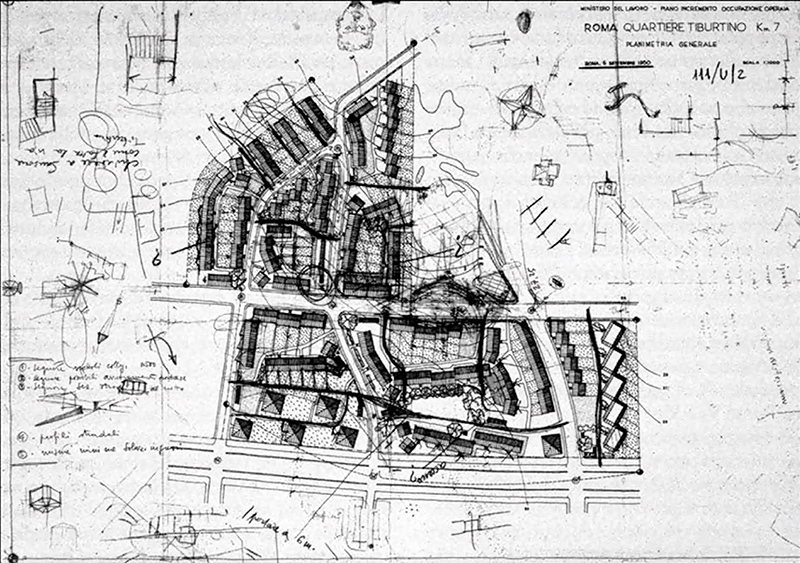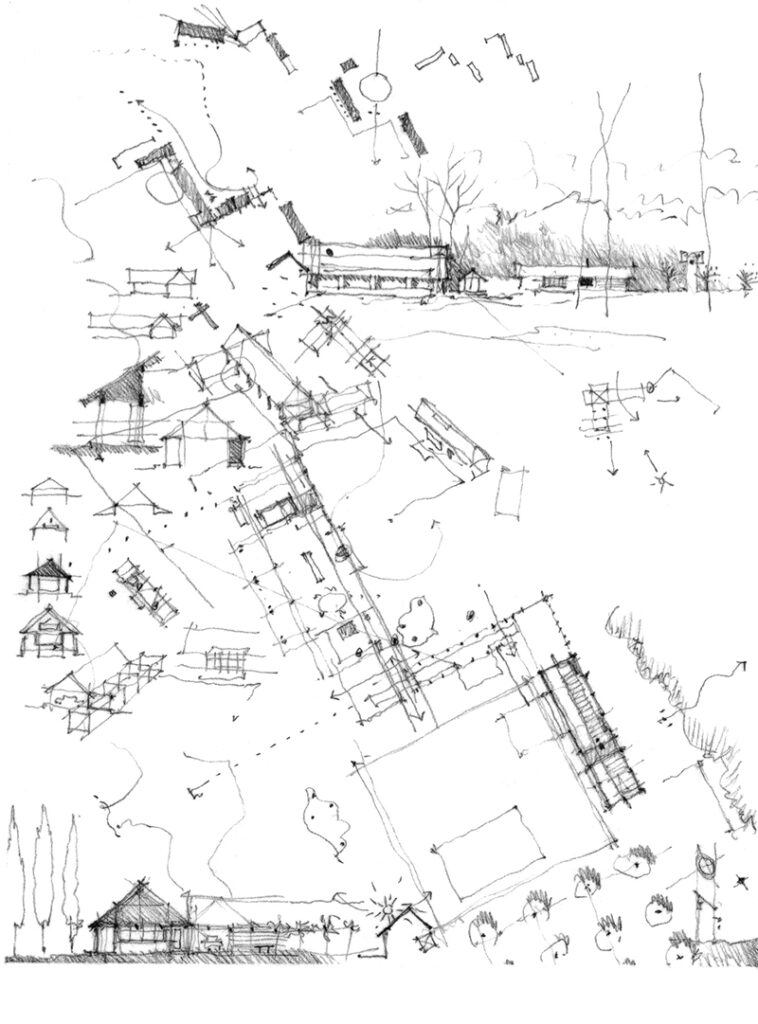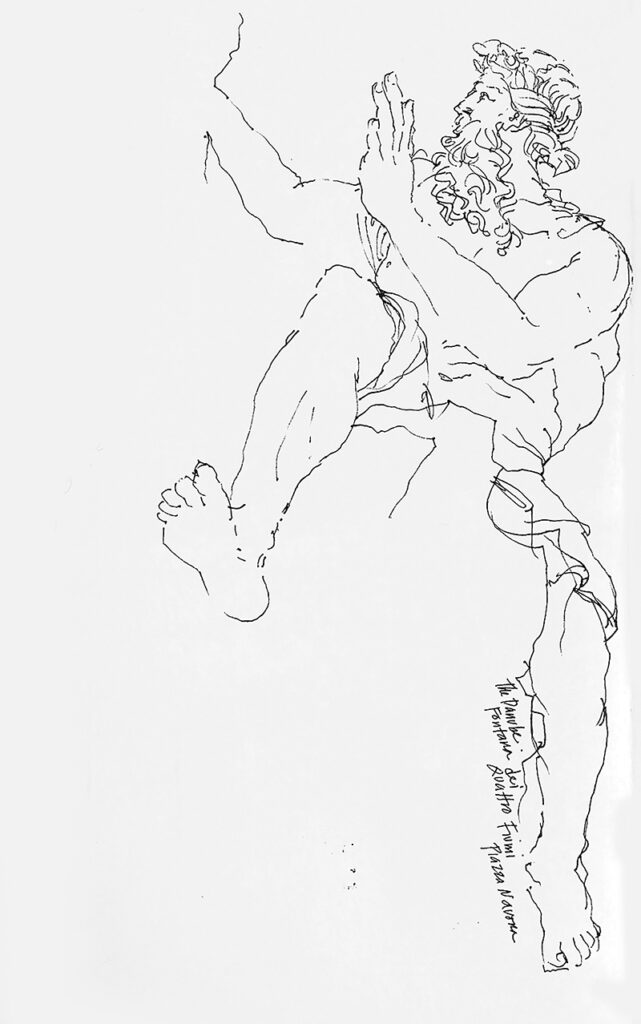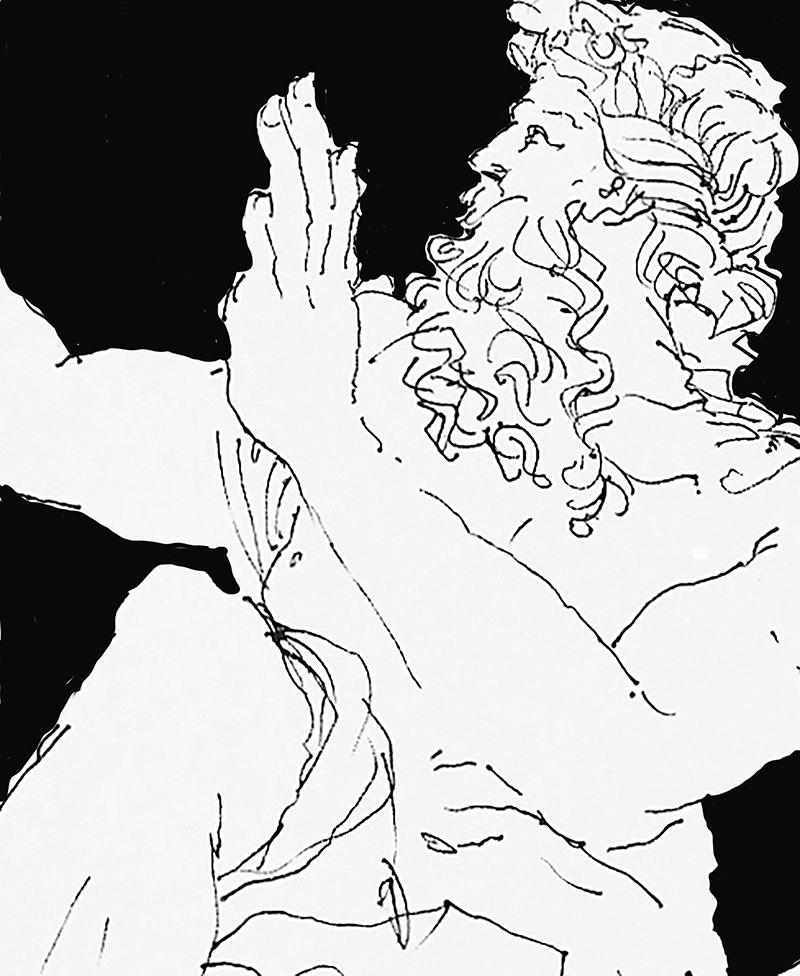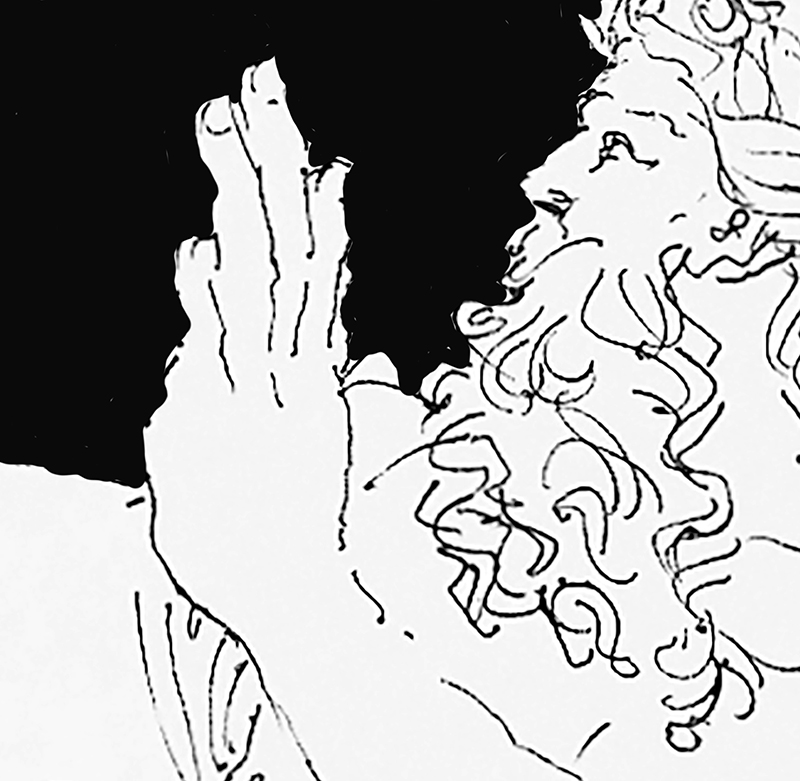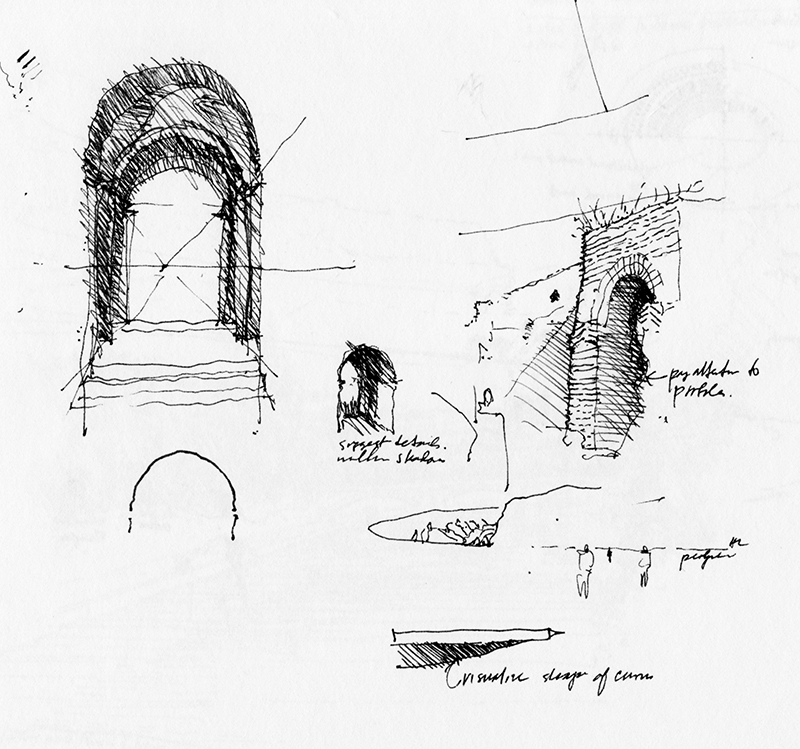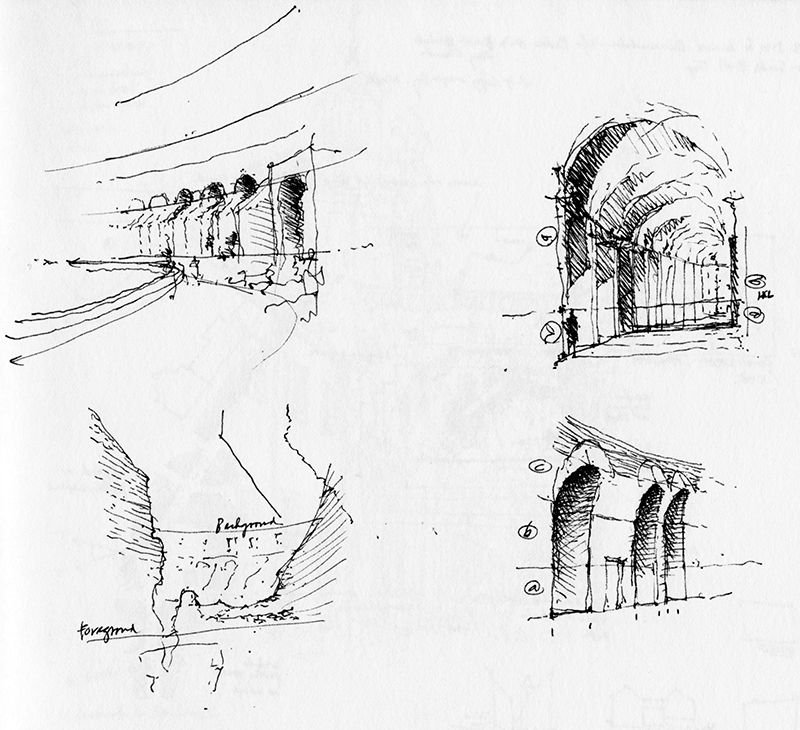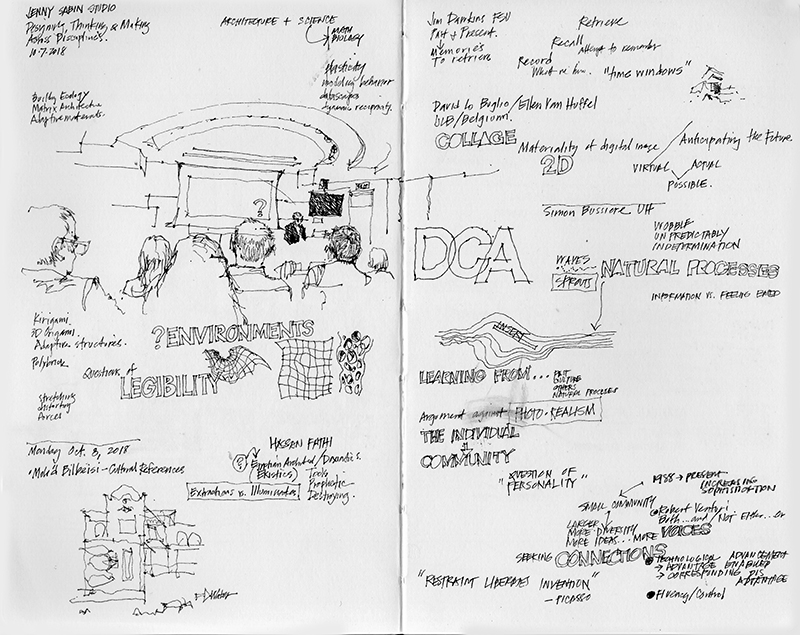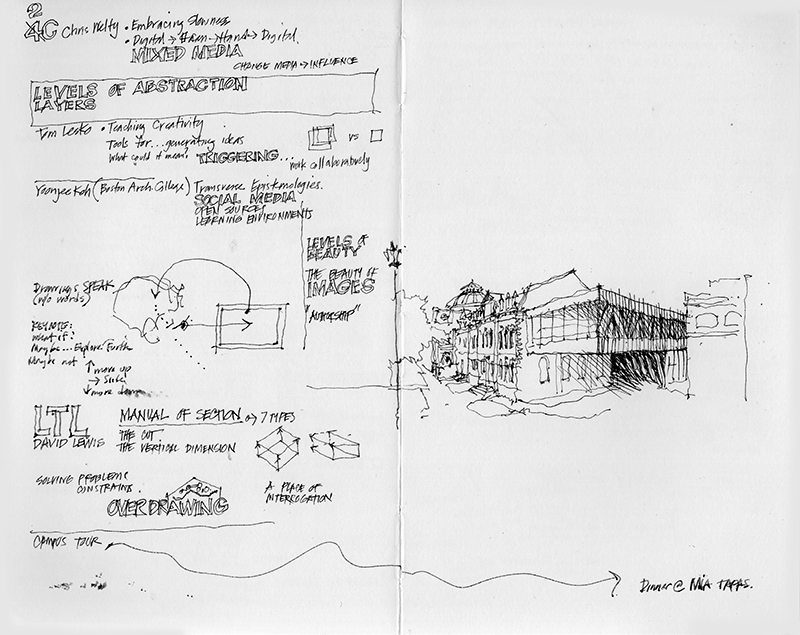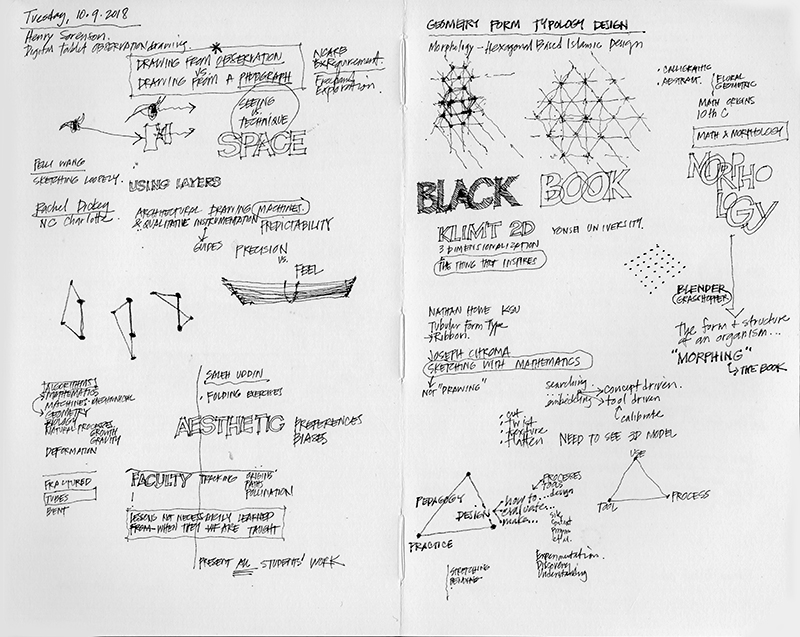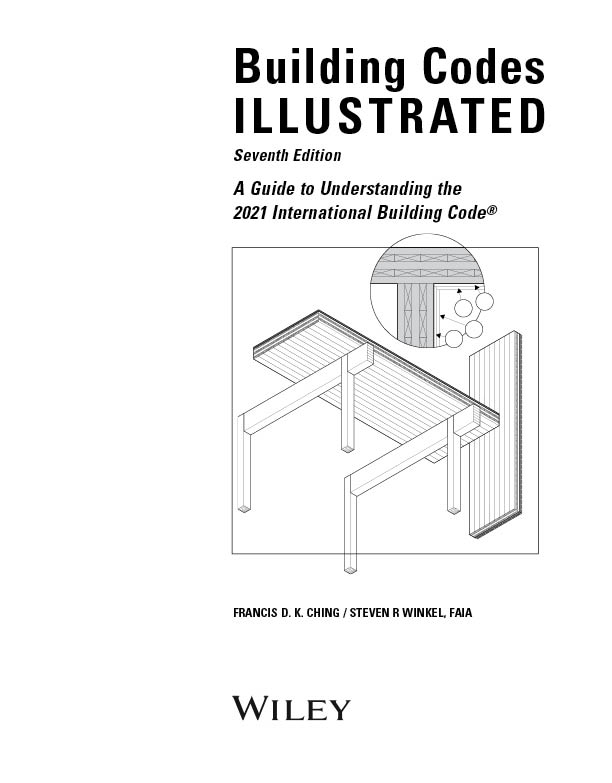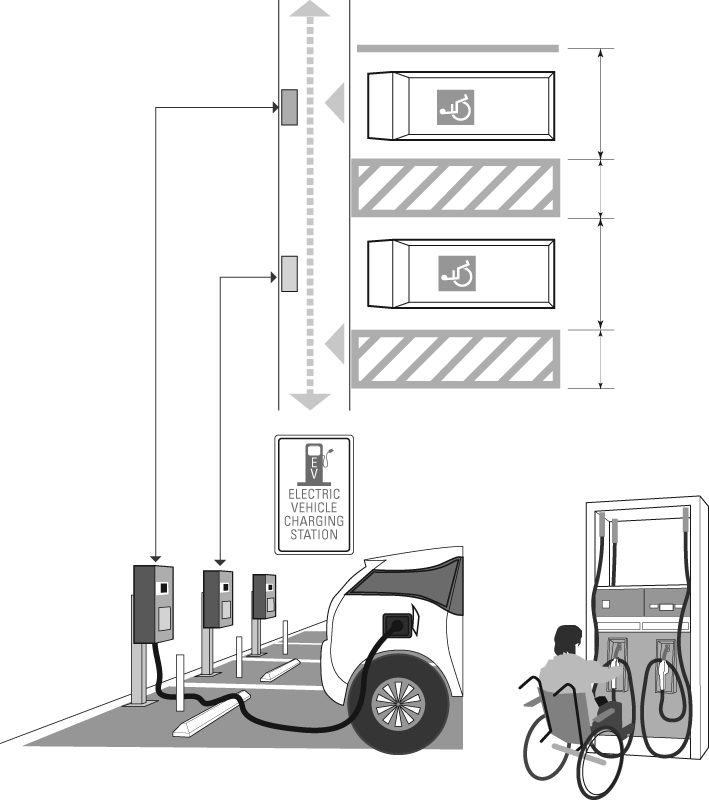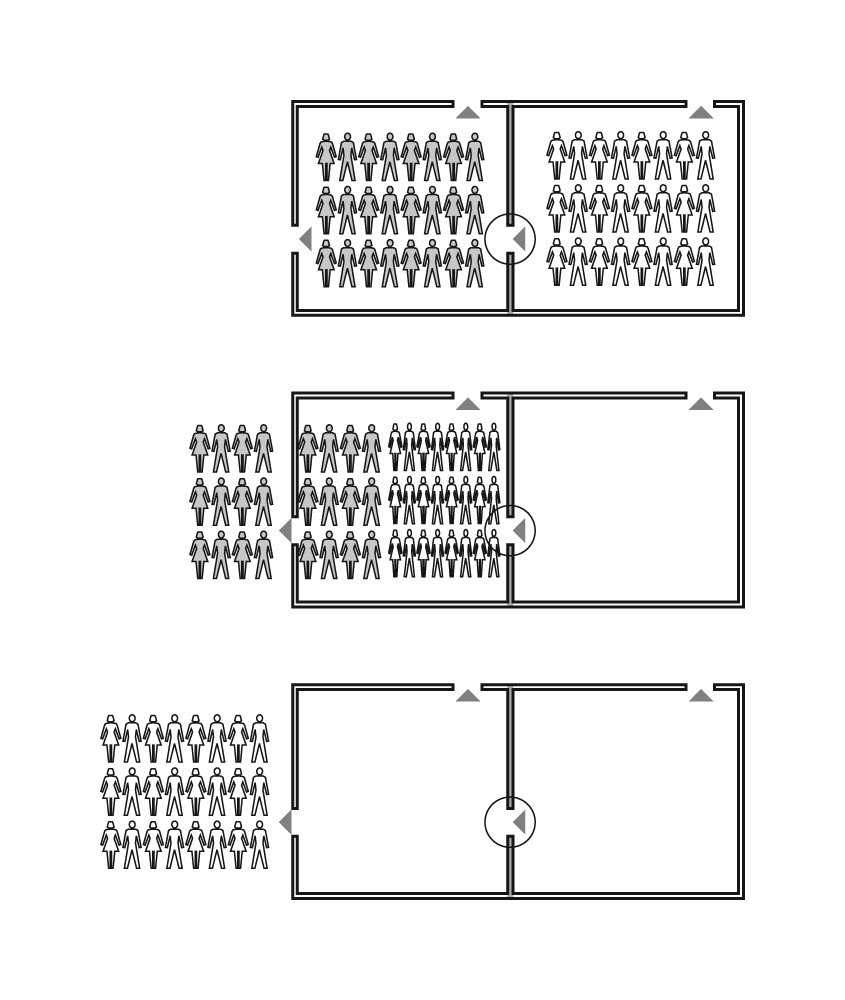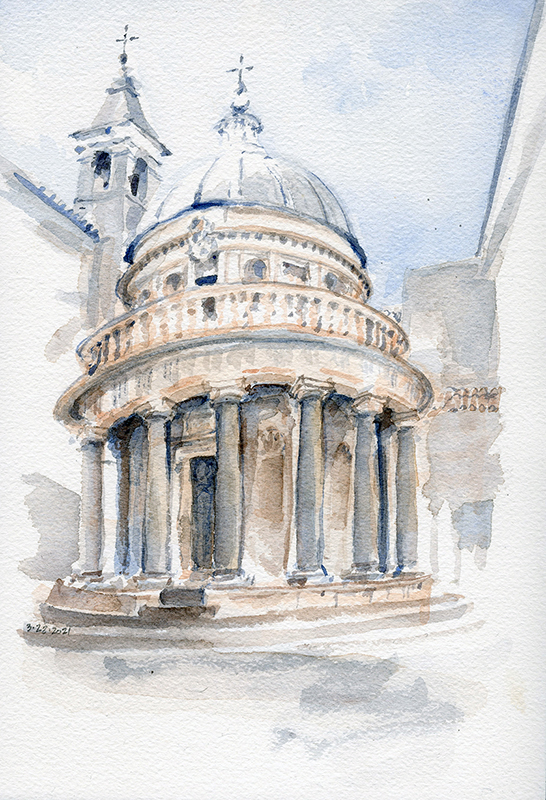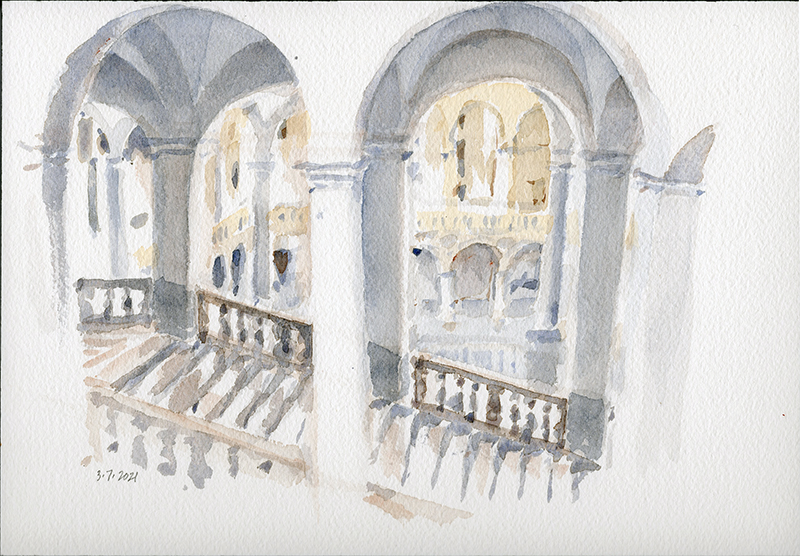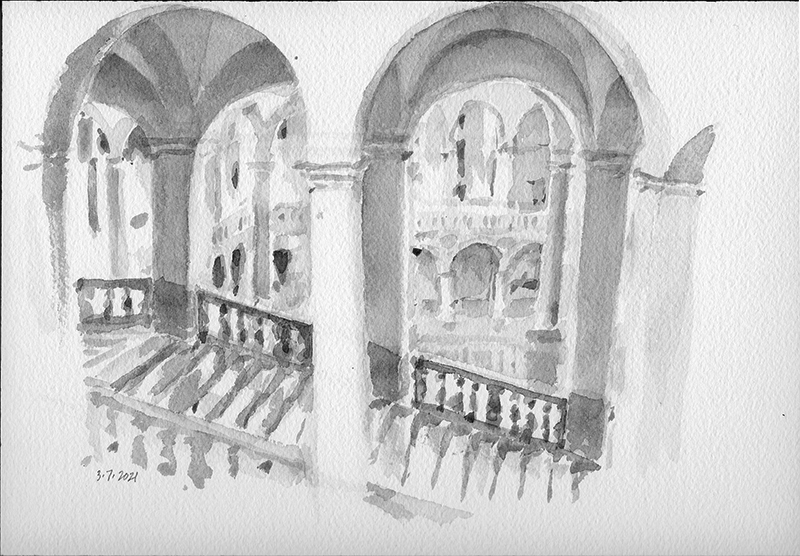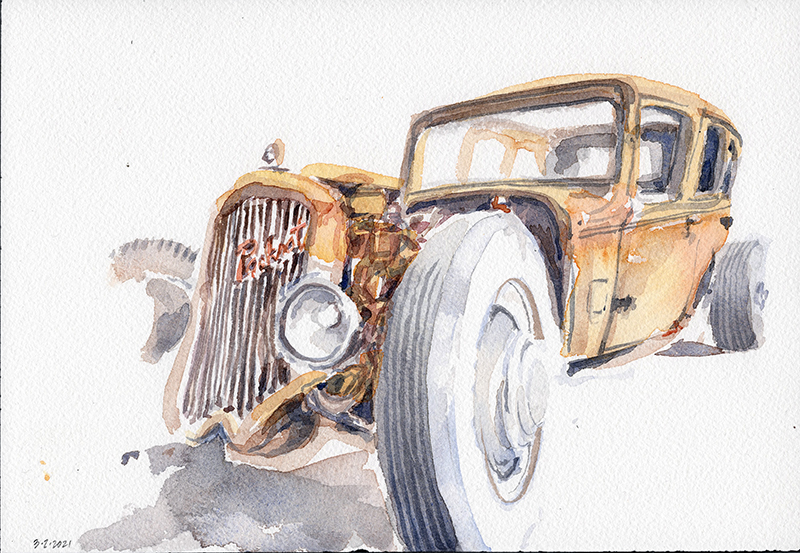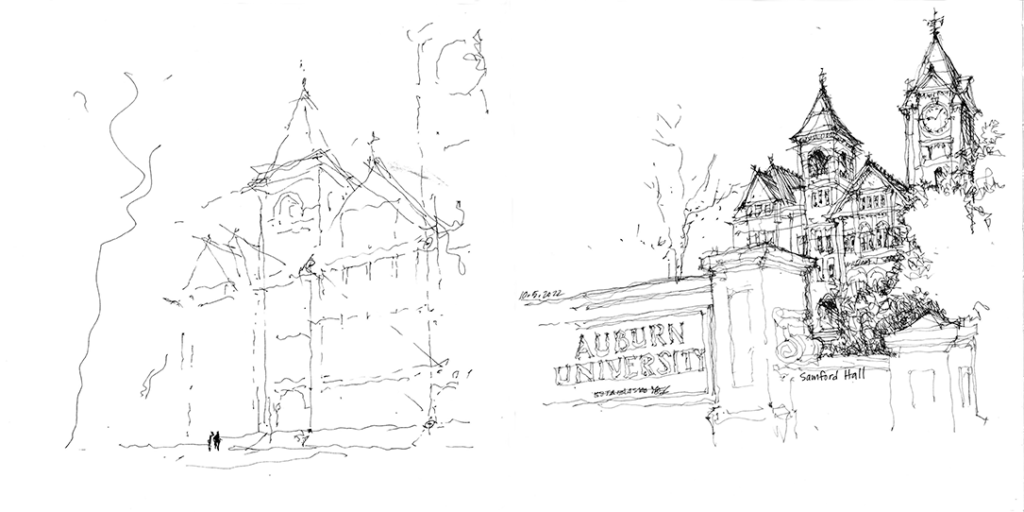
William J. Samford Hall houses Auburn University’s administration, planning, and public relations offices. Built in 1888 after a fire destroyed “Old Main” on the present site, the structure, with its iconic clock tower, is now part of the Auburn University Historic District.
As with the previous post, there are two images above. On the left is my first attempt at blocking out Samford Hall. You can see how the structure fills the page and the top of the clock tower appears to be cut off. Note also how the dark figures establish the scale of the forecourt.
To give the structure more breathing space, I moved back to allow the engraved Auburn University sign to frame the scene in the foreground and also enable the entire clock tower to be included.
Another lesson in composing, framing, and providing context.

